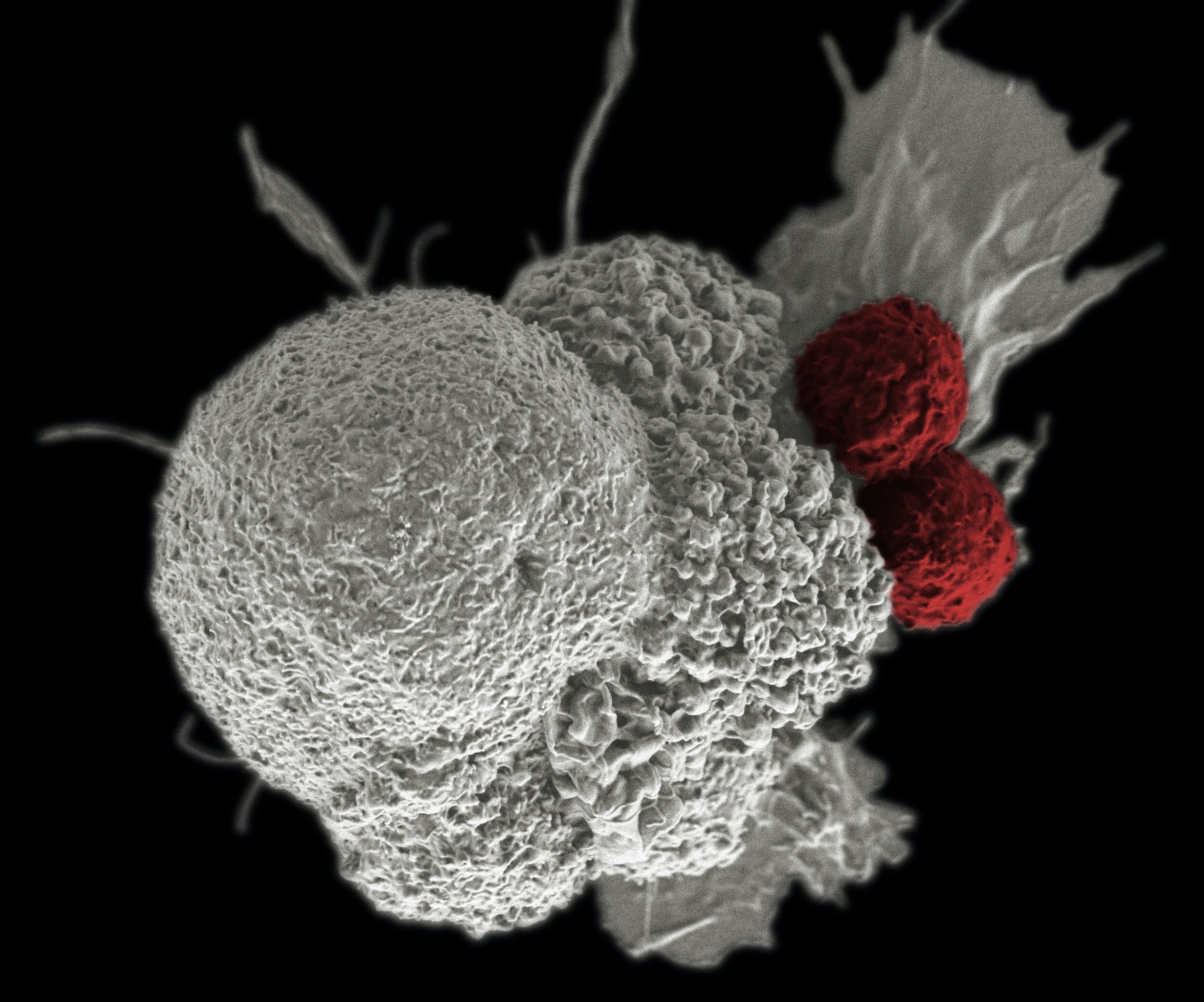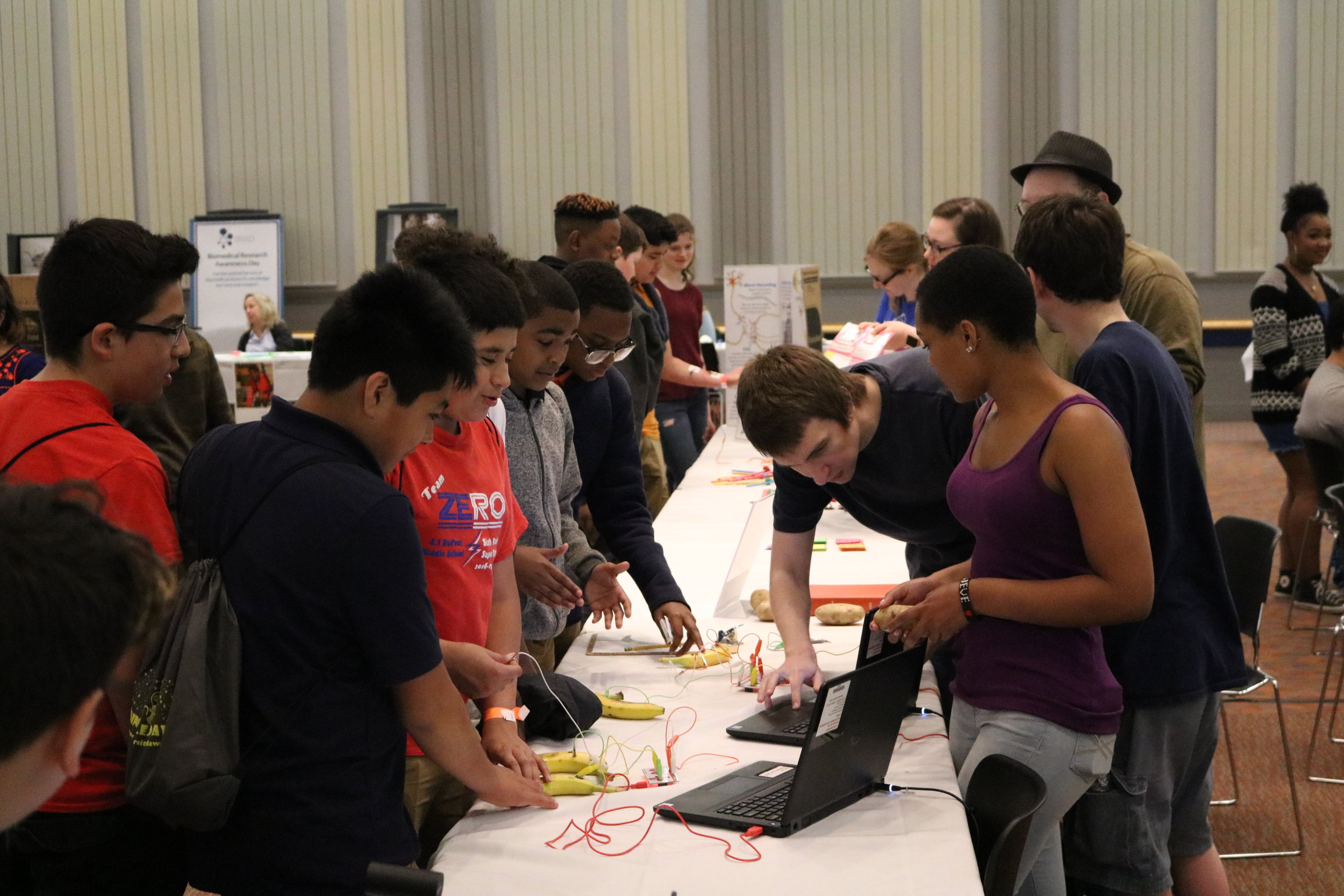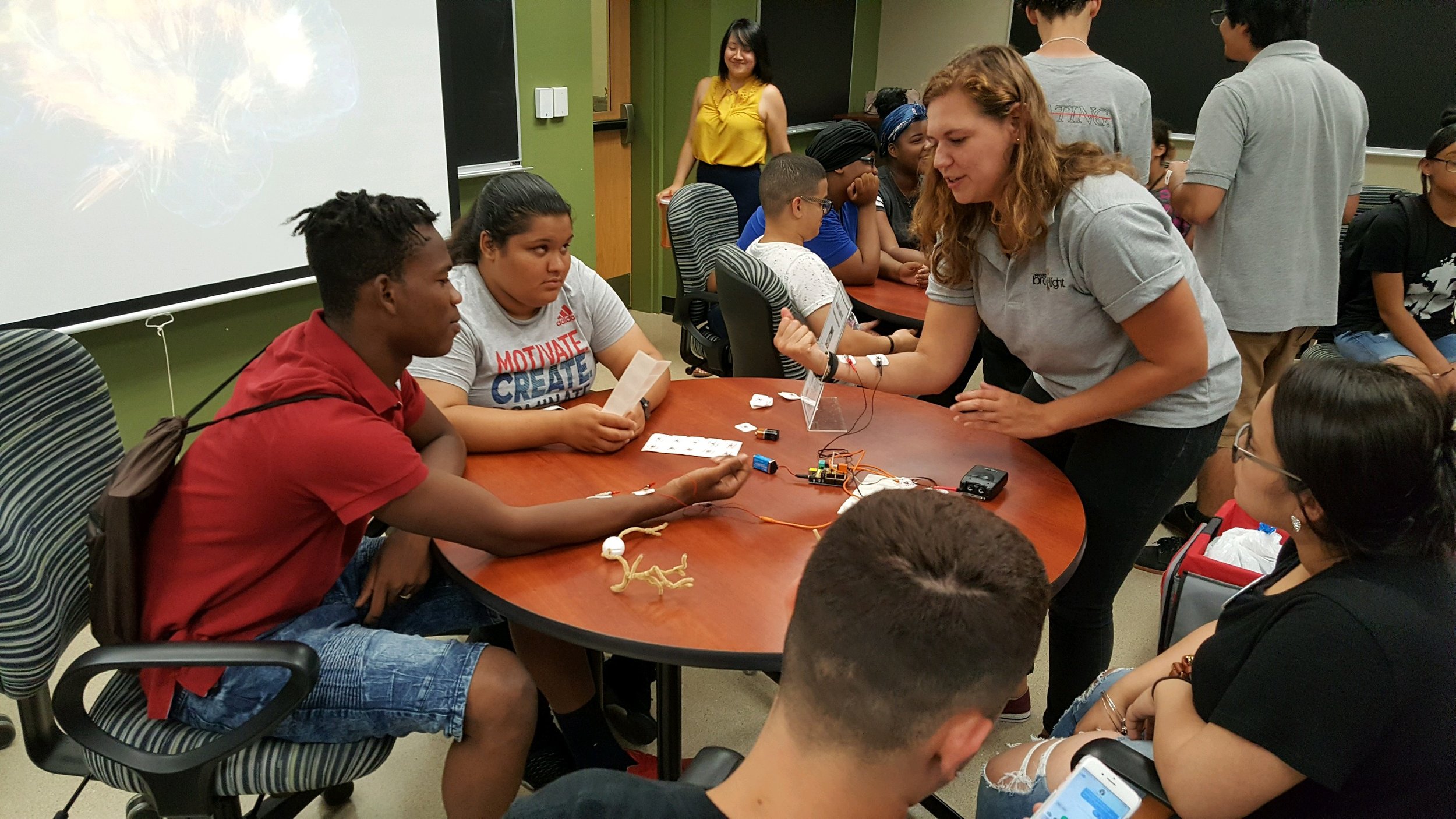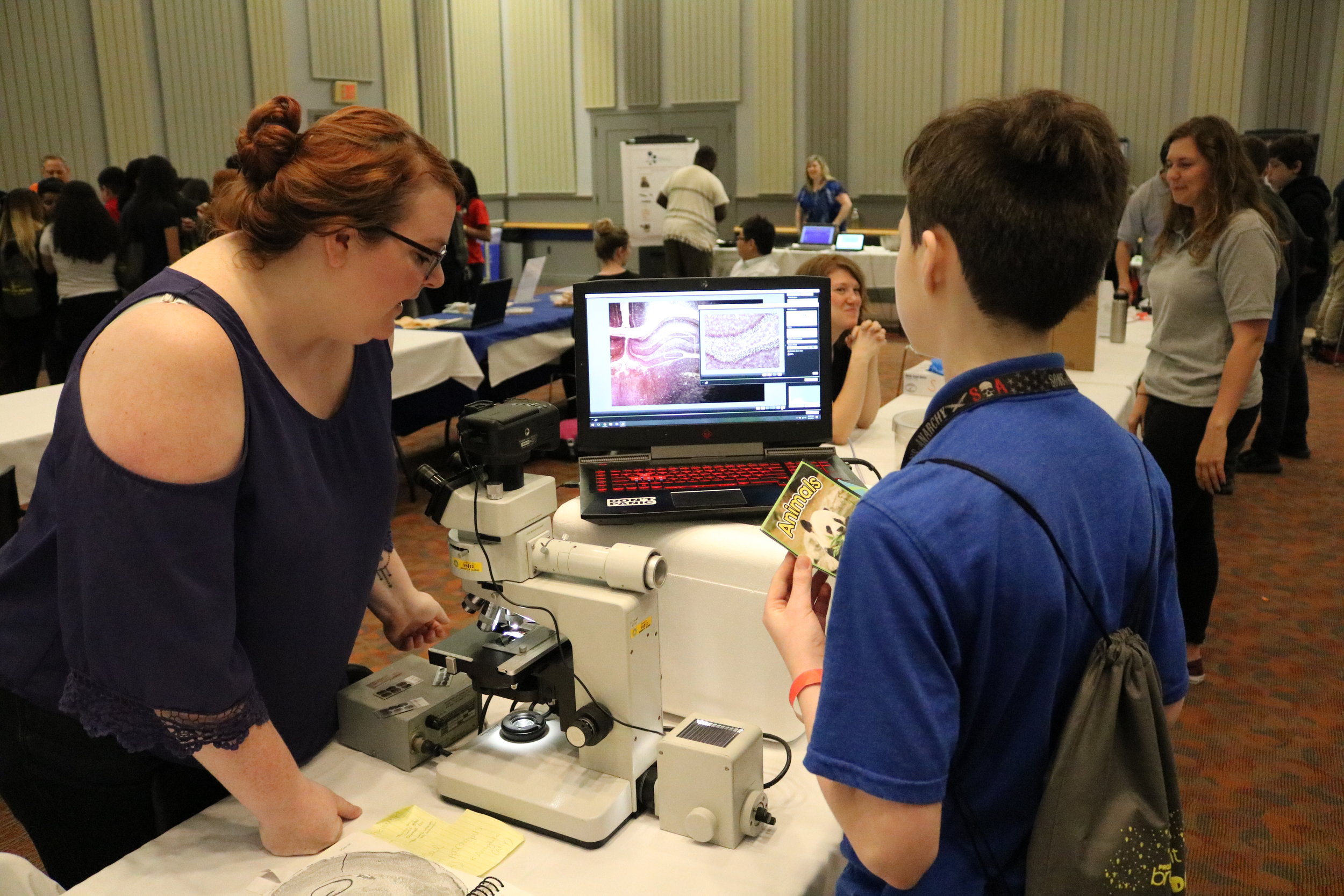Our Services
Established and run by graduate students at the University of Delaware (UD), Project Brain Light provides students (from communities that are historically underrepresented in the sciences) with novel, interactive science experiences centered on introductory exposure to neuroscience and STEAM (Science, Technology, Engineering, Art, and Mathematics).
With the help of Backyard Brains© and UD's Center for the Study of Diversity, our graduate student team can provide scientific demonstrations and talks centered on the following eight themes:
(please click on each image below for a description of the theme)
Our Activities and Stations
Examples Of activities and experimental stations that we offer are listed below.
We are always excited to present our activities at new schools, community centers, and science events. Please contact us if you would like to organize a visit or event.
"Can You Trust Your Own Eyes?"
Learn the limitations of the visual system through a series of perceptual illusions. Presented with a series of visual illusions students will be able to test their perceptual abilities and learn that although vision is our primary sense and is highly dependable, it too, has surprising limitations.
"Are Our Actions Immediate?"
Here students will be able to test their reaction times and learn about the time course of signals traveling to and from the brain out to the body to control movement.
"How Does the Brain Control the Body?"
Learn how the brain communicates with the body using electro-chemical signals. To dive deeper into how the brain and body interact, students can record electrical signals traveling from the brain to the body when a decision to move a muscle is made using electromyography (EMG).
"Can One Person Control Another Person’s Movements?"
Here students will be able to use EMG to record the voluntary muscle movements from one volunteer and use that electric signal to activate the muscles of a second volunteer as a human-human interface.
"How Difficult Would It Be for Someone to Control A Robotic Claw?"
Using EMG recordings, student volunteers can test if the electric signals sent from their brain to their body can be used to control a robotic claw and possibly put their newfound skill to the test in our dexterity obstacle course.
"What Does A Real Brain Look Like?"
Learn how specific functions of the brain are allocated to specific areas. In this station students will be able to examine real preserved brains in light of understanding how the brain is organized structurally and functionally. Then, students will be able to compare and contrast the human brain with a cow brain, sheep brain, and rat brain. To further understand the organization of the brain, students can construct and deconstruct a brain using our interactive models.
"Can We Record Activity in the Brain?"
Observe real-time electrical activity recorded from the surface of the scalp. Similar to the electric signals that the brain uses to move the body, the brain also uses electric signals to coordinate interactions between its different regions and structures. Using a headband equipped with electric sensors we can record electroencephalography (EEG) and listen in on the 'electric conversations' of thousands of neurons.
"The Roach Leg & The Nerve Impulse"
To understand how neurons respond to sensory stimulation, students can investigate real-time nerve transmission while recording from a cockroach and assessing how those nerve cells respond when a their leg receives a soft, light touch. Additionally, they can see what happens when an electric signal is applied to nerve cells in the leg and what it does to movement, particularly when the electric signal is patterned by a rhythmic song.
"The Nerve Impulse & The Robo-Roach"
Here student volunteers can participate in and observe how an artificially-induced electrical signal to one of the roach antennae can directly influence which way the cockroach turns.
"What Does A Neuron Look Like?"
View the distinct shape and form of brain cells. Using our portable field microscope, student volunteers will examine the shape, size, and physical structure of various types of neurons and then compare them to non-neuronal cells, like that of an onion. Students will be also learn about the different parts of the neuron, including the areas from where electrical and chemical signals are sent and received.
"What Does DNA Look Like?"
Learn about the active relationship between DNA and the brain. Using simple household items like a Ziploc bag, dish soap, and salt, student volunteers can remove and examine DNA from strawberries under a microscope.


















